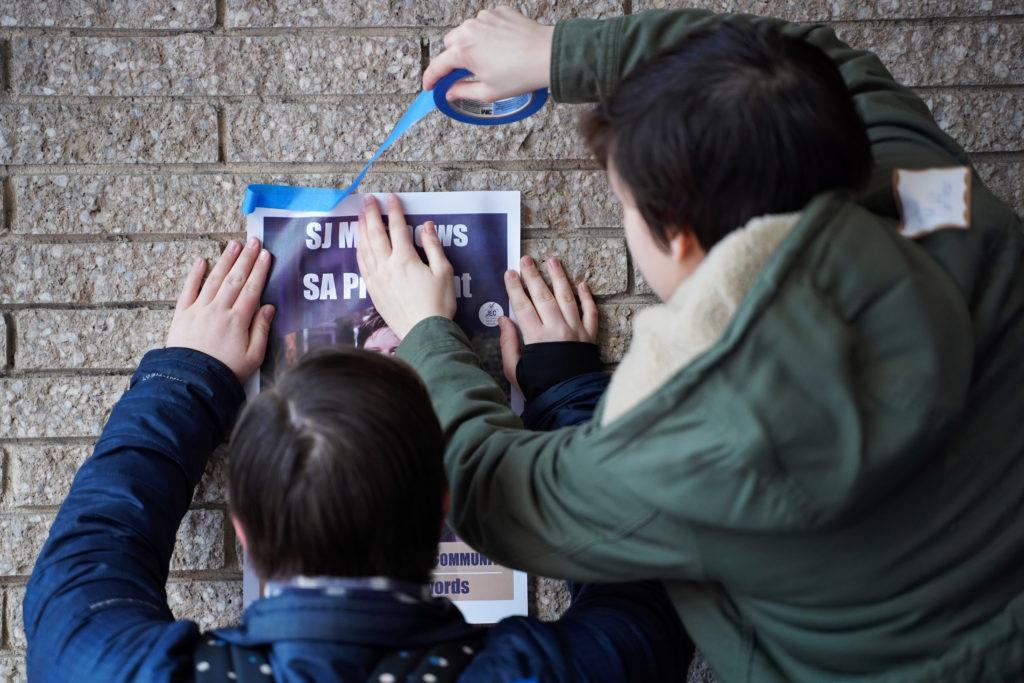Most students competing for the Student Association’s top two spots have spent less money competing for their positions this year than many of their predecessors.
Junior SJ Matthews and freshman Justin Diamond, both candidates for SA president who will compete in a runoff election this week, spent about $70 and $0 on their campaigns, respectively. The two candidates are allowed to spend $100 more on their campaigns ahead of the runoff on Thursday, according to Joint Elections Commission rules.
Amy Martin, the SA executive vice president-elect, spent about $79 on her campaign, roughly $20 more than SA Executive Vice President Ojani Walthrust spent last year. Quentin McHoes, the runner-up in the race for executive vice president, doled out about $132 on his campaign, the highest expenditure of all the candidates running for the SA’s top two positions.
Sophomores Nicole Cennamo and ShanTorrian Underwood, the two other candidates for SA president, spent about $91 and $13 on their campaigns, respectively.
The numbers continue a downward trend in campaign spending. Winning candidates for president and executive vice president last year doled out about $110 and $57 on their campaigns, respectively, after the SA Senate capped spending at $300. The year prior, the senate voted to restrict campaign spending to $600 – a drop from the $1,000 candidates were previously allowed to spend.
In the past, students have spent hundreds of dollars on their campaigns. As recently as 2014, candidates shelled out upward of $900 to promote their ideas.
This year’s candidates said they tried to keep low budgets to demonstrate that any individual can run for a top SA spot without pulling too much money out of pocket.

Emily Recko | Graphics Editor
Source: Joint Elections Commission
James Ingram, the chairman of the JEC, said printing was the most common cost among candidates for president and executive vice president. He said he was “surprised” that candidates did not allot more money toward social media advertisements “given the important role that social media plays in our elections.”
McHoes and Cennamo were the only two candidates to spend money toward social media advertisements on Instagram and Facebook.
“Overall, there were no big surprises in the financial information disclosed to the JEC,” Ingram said in an email.
Martin, the SA executive vice president-elect, said that heading into campaigning, she knew she would not be able to spend hundreds of dollars on campaign materials and relied on her federal work-study job to fund some items, like posters and candy.
She said she largely utilized online campaigning on social media platforms like Facebook and Instagram because she would not need to spend money. Martin held question-and-answer sessions on her Instagram stories in the weeks leading up to the election.
“We had to stick to a tight budget, and we did that on purpose,” she said. “We really only spent what we needed to and no more.”
Diamond, a candidate for SA president heading to the runoff this week, said he did not spend any money on his campaign and will not spend any money before the runoff. Diamond’s platform focuses on eliminating the SA and distributing the SA president’s $15,000 scholarship to student organizations.
“I’m trying to show that students can show they can do a lot, and it doesn’t require money to be the voice of students,” he said.
Cennamo, a candidate for SA president, said she spent about $90 on her campaign because she “really wanted to keep it an affordable campaign” and set an example that students can run campaigns without spending the full $300.
“Anyone should be able to run,” she said. “It shouldn’t depend on how much less funding you have, it should depend on whether or not you’re a candidate and you have good ideas that you want to bring to the table.”
Underwood, a candidate for SA president, and McHoes, a candidate for executive vice president, did not return requests for comment.
Zach Schonfeld and Paige Morse contributed reporting.





